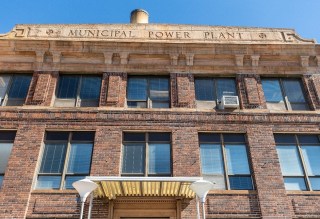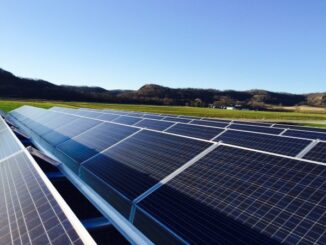
No one knows what a gas utility will look like a quarter-century from now, as many states near deadlines for their 2050 climate goals.
In Minnesota, though, state regulators will soon expect utilities to at least have a vision for the next decade.
The Minnesota Public Utilities Commission voted last month to require long-range resource planning from the state’s three largest gas utilities.
Similar to a process that’s long been used for electric utilities, gas utilities will need to periodically submit plans showing load forecasts under various scenarios and how they intend to meet that demand in a way that’s safe, reliable, and affordable — and in line with the state’s policies.
“An IRP (integrated resource plan), just like it happens on the electric side, informs the level and type of cost-effectiveness and a framework for utility investment,” Commission Chair Katie Sieben said. “The hope is that by having the state’s three largest natural gas utilities file IRPs, it will provide transparency and more intentional decision-making in the years to come.”
The decision stemmed from a yearlong investigation by the commission into fallout from a February 2021 cold snap that caused extreme gas price spikes across much of the country.
Utilities in a handful of other states also file gas resource plans, including Oregon, which has had a similar process since 1989. In Minnesota, utilities typically submit annual plans for the upcoming winter season and offer data on changes in natural gas consumption. Investments in gas infrastructure are often discussed in rate cases.
After a six-hour meeting that featured more than 100 decision options, the PUC began drawing parameters for the data and information it will seek from Xcel Energy, CenterPoint Energy and Minnesota Energy Resources Corp. The plans will include projections for low, medium and high natural gas demand and pricing. They will also model energy efficiency initiatives as a potential resource.
“I think that’s important in the long term for helping the gas sector meet our overall (state) decarbonization goals,” Sieben said.
The Center for Energy and Environment worked with Xcel Energy, the Department of Commerce and the Laborers’ International Union of North America on an approach to natural gas planning that heavily influenced the commission.
The center’s director of policy, Audrey Partridge, said asking for natural gas utilities to look out to 2050 remains difficult “because the quality of the data falls apart.” A 10-year time frame “is significantly longer than any planning on the gas system we’ve done to date.”
Though the plans don’t go as far as some clean energy and consumer advocates wanted to see, they’re hopeful the process, along with recent state laws encouraging gas utilities to diversify and decarbonize their businesses, will help make progress on state climate goals and avoid stranding customers with the cost of infrastructure that may not be needed in the future.
Annie Levenson-Falk, executive director of ratepayers’ advocacy group Citizens Utility Board, said the plans are “essential, given, particularly given all of the transition and uncertainty in the gas industry. It’s necessary, and we’re very happy to see this move forward.”
The natural gas market is in a state of flux, Levenson-Falk said. The growth of electric air source heat pumps is expected to cut into gas demand in the coming years. So will federal and state incentives encouraging geothermal and district heating systems.
Minnesota’s “future of heat” could eventually lead to natural gas being used only for the coldest days, Levenson-Falk said. As more customers switch to electric heating sources, there’s a risk that the cost of maintaining the natural gas system would “fall on households that could least afford it.”
The resource plans will help regulators see the “big picture” and how utilities are planning for it, she said. When gas utilities make investments, they often consider a 40-year timeline. But if gas sales decline, ratepayers will still have to pay for that infrastructure, Levenson-Falk said.
Clean energy and consumer organizations said natural gas utilities should consider a 2050 end-year because that’s Minnesota’s goal for carbon neutrality.
“We want the commission to be able to consider if they’re (gas utilities) putting in a 40 year pipe today, what will the utilization look like in 15 to 20 years?” Levenson-Falk said. “But they didn’t go that far.”
The natural gas sector is much more volatile than the electricity marketplace, with “so many unknowns,” Sieben said. That led the commission not to require utilities to propose a “net zero” future advocated by clean energy organizations. Commissioners also expressed concerns that net zero may impact the system’s reliability.
The commission decided utilities will need to consider externalities such as the societal cost of carbon pollution in the planning process.
“I think that is going to create a sea change in terms of opening up more opportunities for cleaner resources and reducing emissions on the gas side,” Partridge said.
Marketing Manager Kevin Pranis of the Laborers District Council of Minnesota & North Dakota said his union eventually supported the commission’s scope for gas planning. But he warned that no “magic” in planning would offer a perfect path toward reducing natural gas use.
By planning more than ten years out, “you’re basically making it up,” Pranis said. Even the idea of reducing natural gas piping cannot occur unless peak energy demand changes. He believes the distribution system will continue to operate for years but carry less natural gas.
“You need a fully functioning gas system until the day you don’t need it,” Pranis said.
Fresh Energy’s managing director of buildings, Joe Dammel, said utilities have long forecasted continued natural gas consumption increases despite contrary evidence. Nor have they had to include Minnesota’s 2050 carbon neutrality goals in their thinking.
Energy News Network is an independent journalism service of Fresh Energy.
The growth of natural gas “is at odds with, I think, a lot of the emerging policy concerns about the energy transition, customer preference and changes to the marketplace,” he said.
The plans will allow regulators to determine whether natural gas investments will be sensible in an uncertain future, he said. “Gas resource planning is an attempt to provide the commission and other stakeholders with a picture of potential futures,” Dammel said. “Saving customer dollars and keeping rates low is something planning can facilitate.”
Dammel still believes the final rules missed opportunities to gather important data. For example, he said that utilities will have to disclose potential new infrastructure investments but not the costs of replacing existing gas distribution systems, representing a significant portion of their spending.
Still, the natural gas resource planning “is a positive first step,” Dammel said.
The commission, however, might someday ask for net-zero planning.
“That’s the direction that we need to head,” Sieben said. “But are we ready to be there yet? No, but I wouldn’t be surprised if we, in the years to come, do get there and start to plan for a net-zero future in a more deliberate manner.”
The commission continues to take comments and has an August meeting set to further refine natural gas resource planning, including when the requirement will begin.



